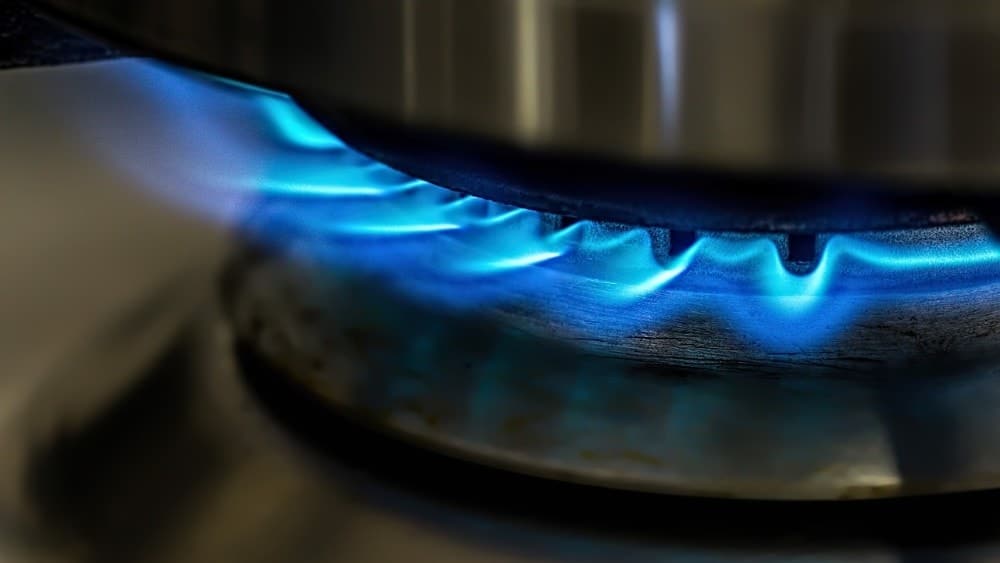When I think of German beer, my mind often drifts to the golden hues of pilsners and wheat beers. But there’s a hidden gem that deserves the spotlight: Schwarzbier. This dark lager, with its rich history and unique flavor profile, is a delightful surprise for anyone willing to explore beyond the usual brews.
Schwarzbier, which translates to “black beer,” isn’t just about its color. It offers a smooth, roasted malt taste that balances sweetness and bitterness beautifully. Whether you’re a seasoned beer enthusiast or just curious about expanding your palate, this German classic is worth discovering. Join me as we dive into the world of Schwarzbier and uncover the secrets behind this enchanting brew.
Overview of Schwarzbier
Schwarzbier, often referred to as Germany’s black lager, offers more than its visually striking deep brown to black hue. I’ve found it to embody a subtle complexity that sets it apart from lighter lagers. Originating from the regions of Thuringia and Saxony, this beer style boasts a history that stretches back centuries. It reflects the craftsmanship and brewing traditions of Germany.
Schwarzbier strikes a delicate balance between sweetness and bitterness. The roasted malt flavors dominate, imparting notes of coffee, chocolate, and caramel. I appreciate how these flavors meld seamlessly, resulting in a smooth mouthfeel. Notably, the hops remain understated, allowing the malt character to shine.

The brewing process involves traditional lager fermentation techniques. I often choose a combination of Munich malt and roasted malts to develop that rich color and flavor profile. Fermenting at cooler temperatures helps achieve the clean finish typical of lagers. This meticulous approach ensures a refreshing drink that is incredibly approachable.
In my experience with home brewing, I recommend trying your hand at Schwarzbier for its rewarding nature. Its unique characteristics will provide an exciting challenge and a delightful outcome.
History of Schwarzbier
Schwarzbier, Germany’s distinctive black lager, boasts a fascinating history that reflects the evolution of brewing traditions in the country. Tracing its roots reveals a deep connection to German craftsmanship.
Origins in Germany
Schwarzbier originated in the regions of Thuringia and Saxony. These areas are known for their rich brewing heritage, with records indicating the existence of dark beers dating back to the 14th century. Historically, brewers utilized roasted malts to produce a darker color and unique flavors. By the time the 16th century rolled around, Schwarzbier gained prominence, especially in the city of Altenburg, which became a center for its production. The style quickly spread throughout Germany, building a reputation for its smooth texture and balanced taste.
Evolution Over Time
Over the years, Schwarzbier underwent several transformations that shaped its current profile. In the 19th century, advancements in brewing technology resulted in more consistent fermentation processes. These innovations enabled brewers to refine the recipe, emphasizing the malt flavors while ensuring clarity and drinkability. The introduction of refrigeration during the lagers’ fermentation process played a pivotal role, promoting cleaner profiles free from unwanted esters. As craft brewing emerged in the late 20th century, home brewers and established breweries alike began experimenting with variations of traditional Schwarzbier, introducing new hop additions and unique twists. This evolution keeps the style fresh while honoring the old-world techniques that make Schwarzbier a beloved choice.
Characteristics of Schwarzbier
Schwarzbier offers a unique experience in the world of German lagers, combining deep colors with a rich flavor profile. As a brewer, I appreciate the balance this beer strikes between malt sweetness and subtle bitterness.
Appearance and Aroma
In the glass, Schwarzbier presents a striking, dark brown to black color, often with ruby highlights when held up to the light. A creamy tan head forms and lingers as you pour, showcasing good carbonation. The aroma of Schwarzbier captivates the senses, with prominent notes of roasted malt, light chocolate, and a hint of coffee. You might also catch delicate aromas of caramel and toffee, adding to its complexity. The subdued hoppiness allows the malt characteristics to shine through, offering a pleasant invitation before that first sip.
Flavor Profile
The flavor profile of Schwarzbier truly sets it apart. It begins with smooth, roasted malt flavors that blend seamlessly with hints of chocolate and caramel sweetness. A light coffee note often emerges, adding depth without overwhelming the palate. The body remains medium, providing a refreshing quality while not being too heavy. It’s important to note that the hop bitterness remains low, ensuring the malt flavors take center stage. A clean finish, thanks to the lager fermentation process, rounds out the tasting experience, making Schwarzbier an excellent choice for those looking to explore darker brews.
Brewing Process of Schwarzbier
Schwarzbier’s brewing process reflects traditional techniques that create its distinct and rich flavor profile. Understanding the ingredients and methods involved is essential for any aspiring brewer.
Ingredients Used
- Water: I use soft water with low mineral content, which enhances the beer’s smoothness while allowing the malt character to shine.
- Malts: I combine Munich malts for a rich, bready base with roasted malts to impart the signature dark color and complex flavors. This blend brings notes of coffee, chocolate, and a gentle caramel sweetness.
- Hops: I select noble hops like Hallertau or Saaz for their mild bitterness and floral aroma, ensuring they don’t overpower the malt profile. This selection maintains balance throughout.
- Yeast: I typically choose a clean-fermenting lager yeast strain, allowing for a crisp finish while letting the malt flavors take center stage. Fermenting at cooler temperatures prevents unwanted esters and maintains clarity.
Brewing Techniques
- Mashing: I start with a single infusion mash at around 152°F (67°C) for about 60 minutes. This step converts starches to sugars and creates body in the beer.
- Boiling: I bring the wort to a boil and add hops per the schedule, usually focusing on flavor hops early and bittering hops near the end of the boil.
- Cooling: After boiling, I cool the wort rapidly to yeast pitching temperature, using a plate chiller or immersion cooler. This step helps maintain clarity and reduces the risk of infection.
- Fermentation: I ferment at cooler temperatures, usually around 50°F (10°C). This temperature promotes a clean profile while allowing the yeast to work effectively for several weeks.
- Conditioning: After fermentation, I lager the beer at near-freezing temperatures for several weeks. This technique clarifies the beer and melds flavors, creating the smooth, balanced character of Schwarzbier.
Popular Brands of Schwarzbier
As a professional brewer and passionate home brewer, I’ve come across several remarkable brands of Schwarzbier that truly capture the essence of this unique lager. Each of these brands showcases different interpretations of Schwarzbier while adhering to traditional brewing methods. Below are some popular brands worth exploring:
- Köstritzer Schwarzbier
- Köstritzer, one of the oldest breweries in Germany, offers a classic Schwarzbier. It’s known for a smooth roasted malt flavor, complemented by light chocolate notes. The mouthfeel remains creamy, making it a perfect choice for both newcomers and seasoned beer enthusiasts.
- Wernesgrüner Schwarzbier
- Wernesgrüner presents a well-balanced Schwarzbier, featuring a richer malt profile and subtle hints of caramel. This brand’s lager has a pleasant bitterness that pairs well with various foods, lending itself to versatility.
- Einbecker Schwarzbier
- Einbecker Schwarzbier is a renowned example of this style. It embodies a darker profile with aromas of dark fruit and spices. The taste is smooth, ensuring the malt shines while maintaining a clean finish.
- Hüttenbräu Schwarzbier
- Hüttenbräu offers a less widely known but delightful Schwarzbier. This lager stands out with its rich, roasty flavors layered with caramel sweetness. It exemplifies how traditional techniques can yield exceptional results, even from smaller breweries.
- Aicher Schwarzbier
- Aicher’s Schwarzbier embodies a nobility in its brewing. The beer boasts a deep color and a robust flavor profile, featuring coffee and dark chocolate notes. Its full-bodied nature makes it an excellent companion for hearty meals.
Exploring these brands not only introduces the rich flavors of Schwarzbier but also highlights the craftsmanship behind each brew. Each sip tells a story of tradition, dedication, and the art of brewing, inviting you to engage and share in the experience. Whether enjoying these from a local brewery or brewing a batch at home, Schwarzbier opens up a world of delightful flavors waiting to be discovered.
Conclusion
Schwarzbier truly is a hidden gem in the world of lagers. Its rich flavors and smooth texture make it a delightful choice for anyone looking to expand their beer horizons. I love how it combines traditional brewing techniques with a unique taste that pays homage to its centuries-old history.
Whether you’re enjoying a classic brand or trying your hand at home brewing, Schwarzbier offers a rewarding experience. So next time you’re at a bar or shop, don’t overlook this dark lager. Give it a try and savor the complexity it brings to the table. Cheers to discovering new favorites!




